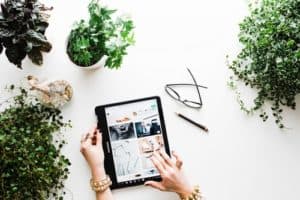Section Navigation
Introduction
Students will learn how to safely and effectively use Facebook to connect with friends and family.
Learning Goals:
By the end of this module, students will know how to set up their Facebook account. They will also learn how to recognize suspicious activity and how to be safe online.
Vocabulary:
Social Media - a platform that allows users to communicate and participate in social networking.
Profile - on Facebook, your profile is how other users view you and how you represent yourself.
Wall - on Facebook you wall is where you make posts and where others can post messages to you publicly.
Newsfeed - on Facebook your newsfeed is a place where you can view things that your friends have posted and shared.
Guiding Questions:
Do you have family or friends that live in another community? Would you like to connect with them more often?
Materials
- People Bingo Sheets
- Pens
- Email account (to sign up for Facebook)
Non-Computer Activity
People Bingo
People use Facebook and other social media platforms to communicate and share information. They can also use these sites to get to know people and stay in touch. To get to know the class better, play a game of “People Bingo”.
The objective is to get a line of signatures on your page and in doing so, get a bingo. Each person can only sign another person’s sheet once. You can sign another person’s sheet in a square that has a fact about you. For example if you like dogs better than cats, you can sign the square with that fact in it. Students can use the pre-filled sheet or fill in a blank one with facts that might fit their classmates. Once someone gets a bingo, keep playing until someone fills their whole card.
Computer Activity
Get on Facebook
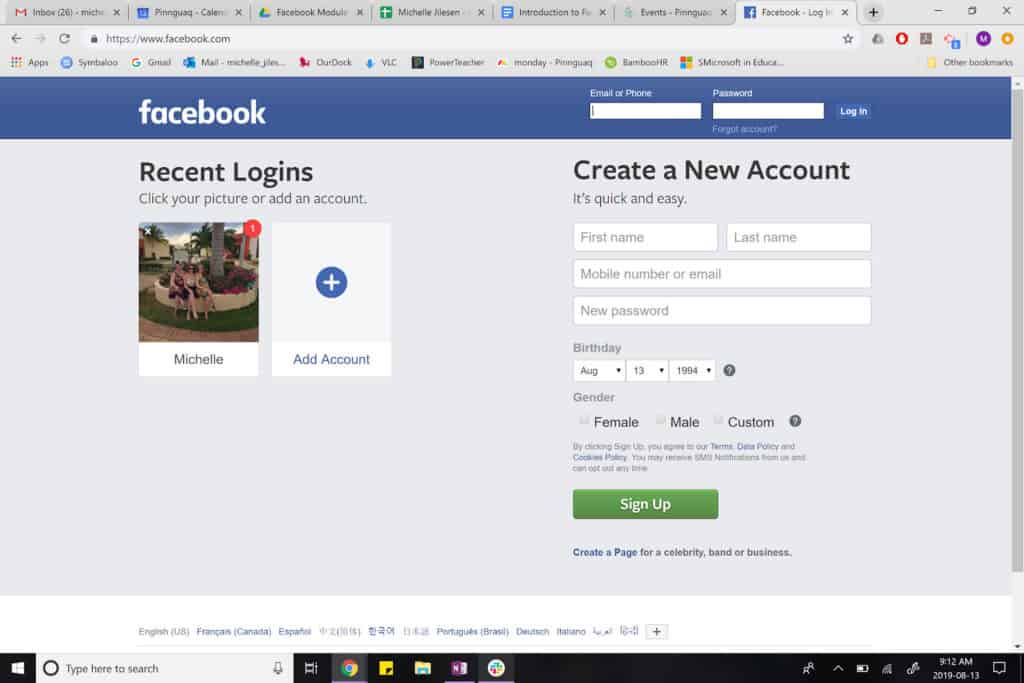
Go to https://www.facebook.com/ to register for a Facebook account or log in if you already have an account.
Set up your Profile
At the top of the screen you will see your name.Click it to go to your profile. Your profile is where your post your information and pictures for your friends to see.
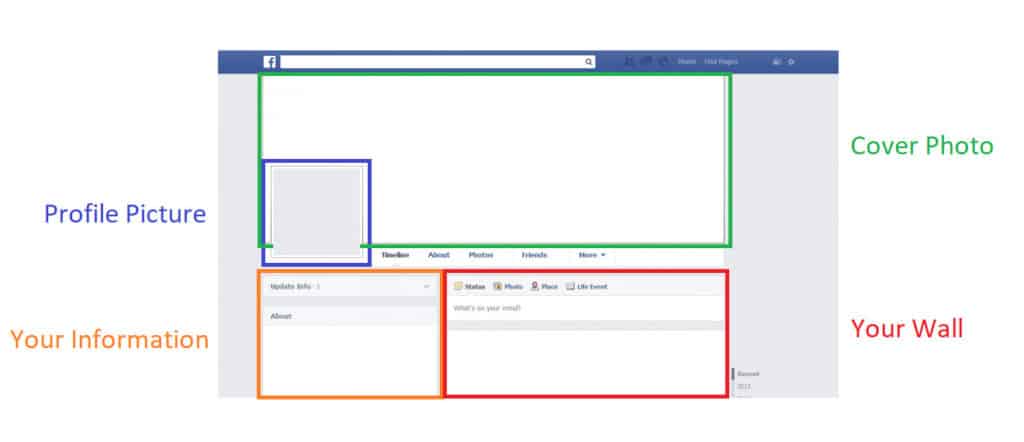
Your profile picture is what your friends will see when you post something or comment on another post. Your cover photo is what your friends will see when they visit your profile. Your information can also be seen by your friends when they go to your profile. Your wall is a place where you can post a status. Your friends can also post things to your wall that they think you might like.
Take some time to add your pictures and information. Remember when you are posting to social media to only share information that you want everyone to see and know. Do not post private information such as your passwords. Under your information or the About section you can add where you work, live, go to school and more. It is not wise to put exact addresses because you may not want everyone to know exactly where you live.
Adding Friends
To find friends search their name in the top search bar beside the Facebook logo. When you think you have found your friend check their profile to confirm it is the correct person. When you are ready you can click “Add Friend”. This will send them a notification letting them know you would like to be friends. Once they confirm the friend request you will be able to see each other’s posts and message each other.

Notifications
You will get notifications on Facebook when people post on your wall, comment or like a post on your wall, when you have a friend request or when you are tagged in a post. The notifications will appear on the bar across the top of your screen. When you click on the notification icon, a list of your notifications will appear. If you click on a notification it will take you to the post or page from which it was generated.

Settings
There are some settings that you should adjust on your account to keep your information secure and private. On the top right corner of your screen click the little arrow and select “Settings” from the drop down menu.
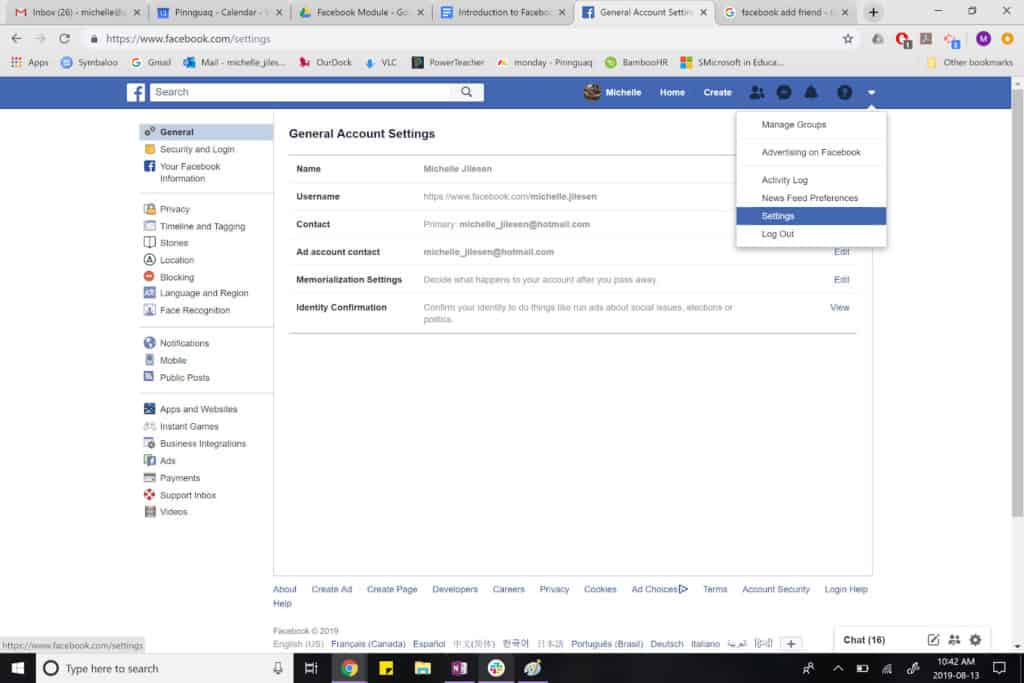
Security and Login is where you can manage getting on to your account and your password. This section also keeps track of where you are logged in which allows you to monitor if someone else has been on your account.
Privacy is where you can control who can view your profile. You can restrict certain things, like your posts, to only be seen by your friends instead of the public. This will make it so people you are not friends with cannot see what your are posting. By restricting access to your friends you will protect your privacy.
You can also manage your notifications and much more through settings.
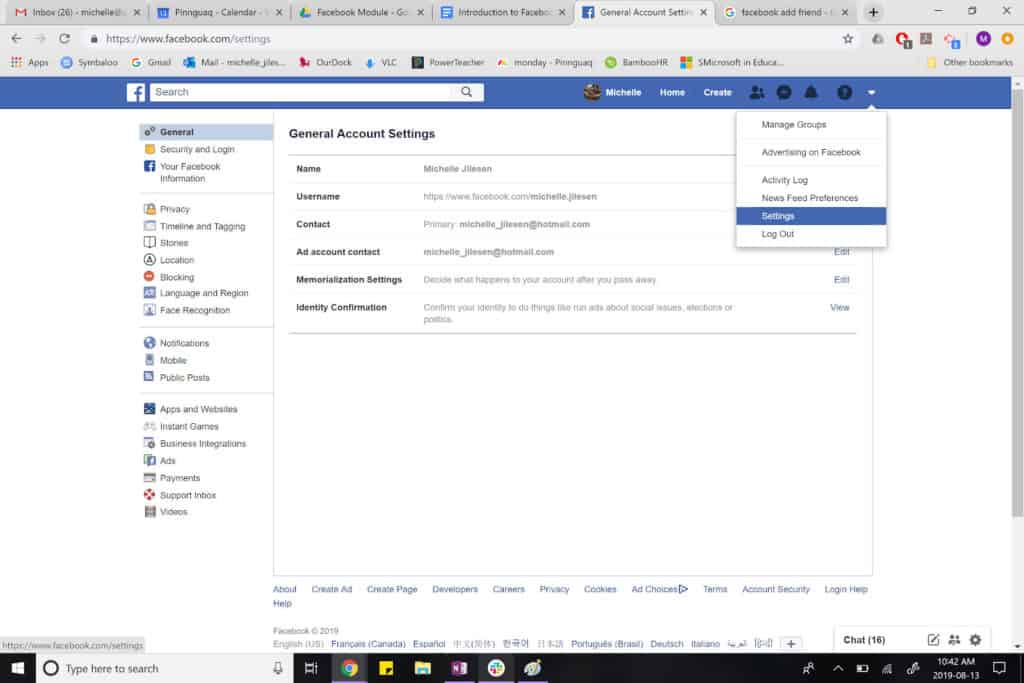
Newsfeed
Your newsfeed is where you can see what your friends post and share on Facebook. If you follow any business pages, their posts will be visible on your newsfeed as well. To get to your newsfeed, click the Facebook logo or the “Home” button on the top bar of the page.
Make a Post
You can make a post on Facebook from your newsfeed or from your profile page. When you are making a post you can add pictures, videos, a life event, a feeling and tag friends. You don’t need to include all of these when making a post but can add them to help express what you are saying. When you tag a friend in a post, they will get a notification.
When you post something on Facebook, people can like, comment or share it. You can do the same to other people’s posts. When you like a post you can change your response from a regular like to a reaction such as love, wow and more. This is done by holding down on the like button if you are on a mobile device or hovering over it if you are on a computer. To comment on a post click the “Comment” below the post or click in the comment box. If you would like to share a post you can select “Share” which will give you a few options. You can “Share Now” which will create a copy of the post on your wall. If you want to add to the post you can select “Share…” and add what you would like. You can also share the post with friends through Facebook messenger.
Messaging
Facebook has a messaging feature that allows you to send messages privately to your friends. To write a message click on the speech bubble on the top bar. You can view previous conversations and create a new message or group message from here.
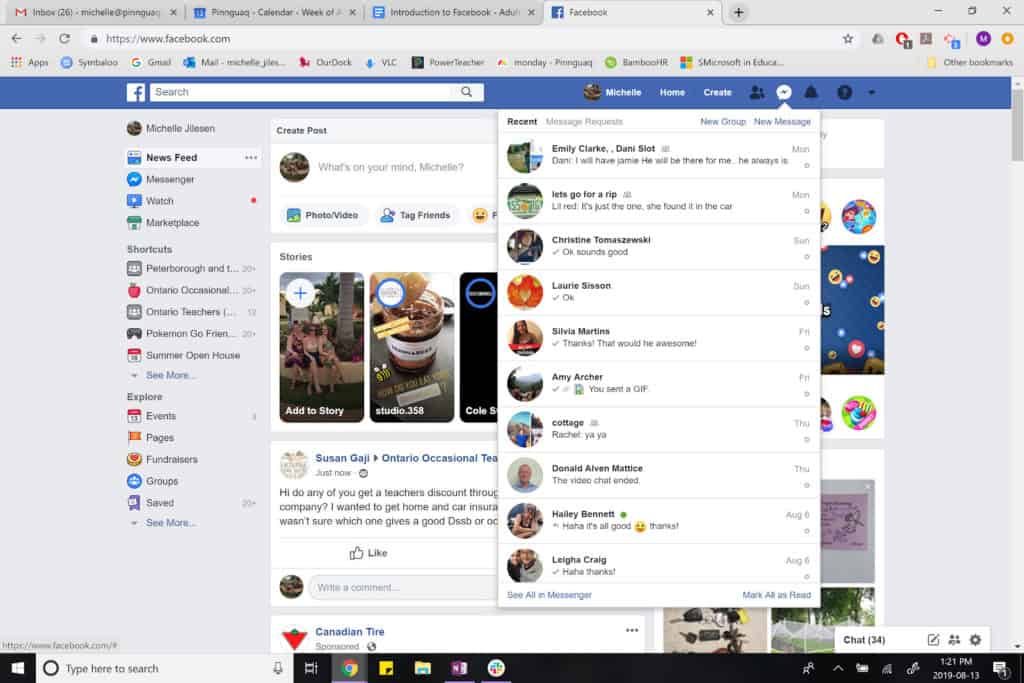
Safety
There are other ways to protect yourself online other than just adjusting your privacy settings. Keep an eye out for anything that might seem suspicious. Typically if there is a post that seems too good to be true, it is a scam. Don’t click links that are suspicious as they might lead to a virus or someone getting access to your information. If you see a suspicious post you can report it by clicking on the three dots on the top right corner of the post. In the drop down menu select “Find Support or Report this Post”. Another way to stay safe is by only accepting friend requests from people you know. If you don’t think you know a person, don’t accept the friend request.
It is not safe to post your address or other contact information on social media. If you are going on a trip do not post while you are away or that you are leaving. If this is posted publicly on your social media accounts you are making people aware that your house is empty and possibly unmonitored. This leaves you vulnerable to break ins. It is best to post about your trip once you are back home.
Recently there has been a scam where a clone of a person’s Facebook account is created. It uses the same name and profile picture and will send you a request. If you are already friends with the person, do not accept the second friend request. If you accidentally accepted the friend request the cloned account might send you a message pretending to be a real person and send you links. Do not click the links; block and report the account. For more information on how to recognize scams check out our module on Critical Literacy Scams.
Conclusion
Once everyone has had a chance to set up their Facebook account and become familiar with the settings take a group photo to post on Facebook. Have the participants add you as a friend. Once everyone is friends they can tag themselves in the photo and share the post. They should also follow Pinnguaq on Facebook to get updates about our events and programs.
Resources
- Facebook has a Help Center that addresses common questions users have.
- Facebook has an article on how to spot scams and reporting them.
- Pinnguaq has a Facebook page that is worth following to stay informed about upcoming events.
- The Iqaluit Makerspace also has a Facebook page that has information on our events in Iqaluit.



